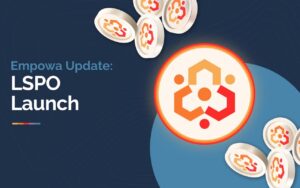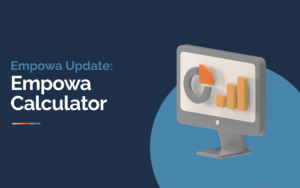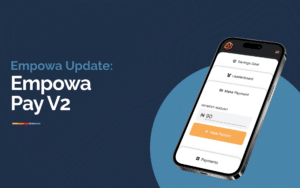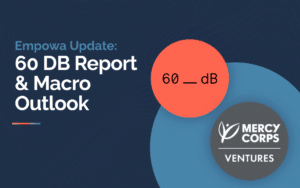As announced at last year’s Cardano Summit, we have achieved something that we never could have hoped for in our wildest dreams. We signed an MOU with Conselho Municipal da Beira (the Municipality of Beira), Mozambique. In partnership with Casa Real and Sociedade de Desenvolvimento Urbano da Beira (Beira Urban Development Company); who are supported by the Dutch government; we now have the mandate to finance rent-to-own contracts for 25,000 homes in an upcoming development called Maraza. Seeing on the ground institutional buy-in at this level for our Cardano based solution is a watershed moment for the Empowa project.
The success of our first NFT sale, coupled with the Maraza opportunity, has sparked the interest of more traditional investors in the space, such as DFIs (Development Finance Institutions). Being considered by large institutional investors is an important step towards being able to scale the Empowa ecosystem and address the backlog of 50 million homes in Africa.
We have also considered your feedback following the release of our first NFT, which has helped us to prioritise what we focus our efforts on. The overwhelming feedback from the community centred around these three key questions:
- How can I support Empowa housing projects using my $EMP token?
- How do I get a return for holding the token?
- How can I continue to support Empowa housing projects without having to spend more money?
To address this feedback and to enable us to unlock the large amounts of capital available through institutions, our Quantitative Analytics and Risk team (led by Andrew Forson) have been working on a model in which the EMP utility token is used to collateralise Empowa’s affordable housing loans.
Using the property itself as security for a loan (a common traditional approach) adds legal complexity, significant delays, and unsustainable expense to our decentralised approach for raising capital. The traditional land as security approach will also be impossible for us to sustain across all the countries within our potential market. Perhaps most importantly, property in our target markets are not very liquid. This lack of liquidity embeds that risk in the cost of a loan. By using Empowa’s novel approach to collateralisation, which leverages our EMP token, we ensure our ability to scale across multiple countries while providing investors a liquid form of security.
The Quantitative Team have devised a model that:
- Sets a price index for housing units, measured in EMP;
- Embeds physical characteristics of the houses being collateralised, as well as variations based on country, within the index; and
- Enables housing developers seeking funding to calculate the baseline amount of EMP required (actual amount may be negotiated during financing) to collateralise their project’s property types.
This collateral model provides a new opportunity for EMP token holders, as they will now be able to support housing developers to meet their collateral obligations. We are therefore exploring different ways to enable this support, including the following:
- Locking some of the supply to enable us to capitalise our platform at current market prices to provide greater platform stability.
- Introducing an ecosystem-wide collateral pool (a Collateral Treasury) to minimise the impact of a single project default.
- In the future, create instruments that allow non-developer participation in the provision of collateral.
This model can be viewed here
The mechanisms by which these collateral support features will be introduced to the Empowa ecosystem are actively being worked on and we will continue to provide updates as they progress.
The first of these mechanisms; to be introduced soon; will be Collateral Support Vault. The Vault will lock up supply, which along with the demand for new project collateral will support the value of EMP used for collateral.
Like other similar products, upon launch EMP holders will be invited to lock their tokens in our smart contract. Returns will be paid using a percentage of net income generated through the Empowa platform. To allow The Vault to properly support the described collateral model, a sufficient number of projects need to be active within the Empowa ecosystem. Until this level of utilisation is achieved, a degree of risk exists for developers and project funders.
We therefore plan to initially supplement The Vault returns through the use of some of the Operating Fund token allocation, so that the protocol is also contributing to this early stage risk. As more projects are funded and other collateral support mechanisms are introduced, more returns will be generated through platform net income, reducing (and eventually eliminating) the need to use the protocol owned risk allocation to contribute to vault returns.
As The Vault returns are correlated to platform-wide project activity, they will be shared across everyone participating in the EMP pool. The amount of individual return will therefore depend on the total amount of EMP locked for a particular period. We are also exploring the possibility of providing additional rewards through incentive programs, such as lockup periods and NFT staking.
The introduction of The Vault is an exciting development, as it allows our community to support on the ground developments, 100% in EMP and earn returns while they HODL their $EMP.
FAQ
What are XP points how are they different from EMP tokens?
XP points are the native points system of the Zealy project, EMP is the Empowa Token. XP points can’t be exchanged for EMP, but may be used to enter competitions where EMP tokens may be a prize.
Where can I find out more about Zealy?
All details about the Zealy project can be found on their website https://zealy.gitbook.io/crew-guides/
How often will competitions be held?
For now, the plan is to host competitions at ad-hoc intervals throughout the year. Once we have gauged the success of the Zealy we will plan a more regular schedule of competitions.
What prizes can I win?
Prizes will vary depending on the competition. Some competitions may be more exclusive and therefore carry prizes of higher value while others may be easier to enter with appropriate prizes on offer.
Examples of prizes may include; EMP tokens, NFTs, Partner’s digital assets and Merchandise to name just a few examples





